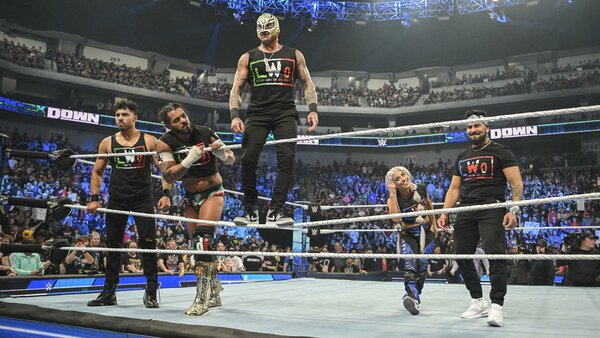Why WWE Has Finally Fixed THIS Historic Flaw

WWE will hope so.
Used sparingly and shrewdly, factions have historically been a smart and successful way to drive business forward by simultaneously preserving and presenting blood feud showdowns.
On the very first episode of AEW Dynamite, Chris Jericho revealed that he had surrounded himself with an "Inner Circle" to wage war on The Elite, and months past before the company had gotten even remotely close to exhausting the various singles and tag combinations. In that time, so many groups had formed that - as early as 2020 - there were calls for a Trios division to keep the momentum going.
Factions came into their own in the Attitude Era for WWE, but Vince McMahon's long-known disdain for tag teams (why pay two guys when one will do, pal) seemed to marginalise and minimise their effectiveness as the company's peak years fell away. D-Generation X were fiercely protected and Evolution were lionised quite literally beyond belief, but it doesn’t take a Chase U graduate to work out why those two were given extra care and attention.
Here in 2023, WWE acknowledging that their top heels are made up of groups (or at least, the ones that work full time are) gave the main roster a much needed shot in the arm ahead of a Backlash that will feature dramatic multi-man main events loaded with intrigue instead of beat-for-beat rematches.
Quantity and quality has been a problem in WWE’s top tier for close to two decades now, but might the embracing of teamwork make this new dream work?
The Bloodline, The Judgment Day, The LWO and the KO/Sami/Riddle unit will hope so. Success for them now will motivate others to spot the pattern, and WWE’s roster feel as focussed as it once did under Chris Kreski at the turn of the millennium.
For fans, financials, and the fate of countless directionless midcarders, there’s strength in numbers.